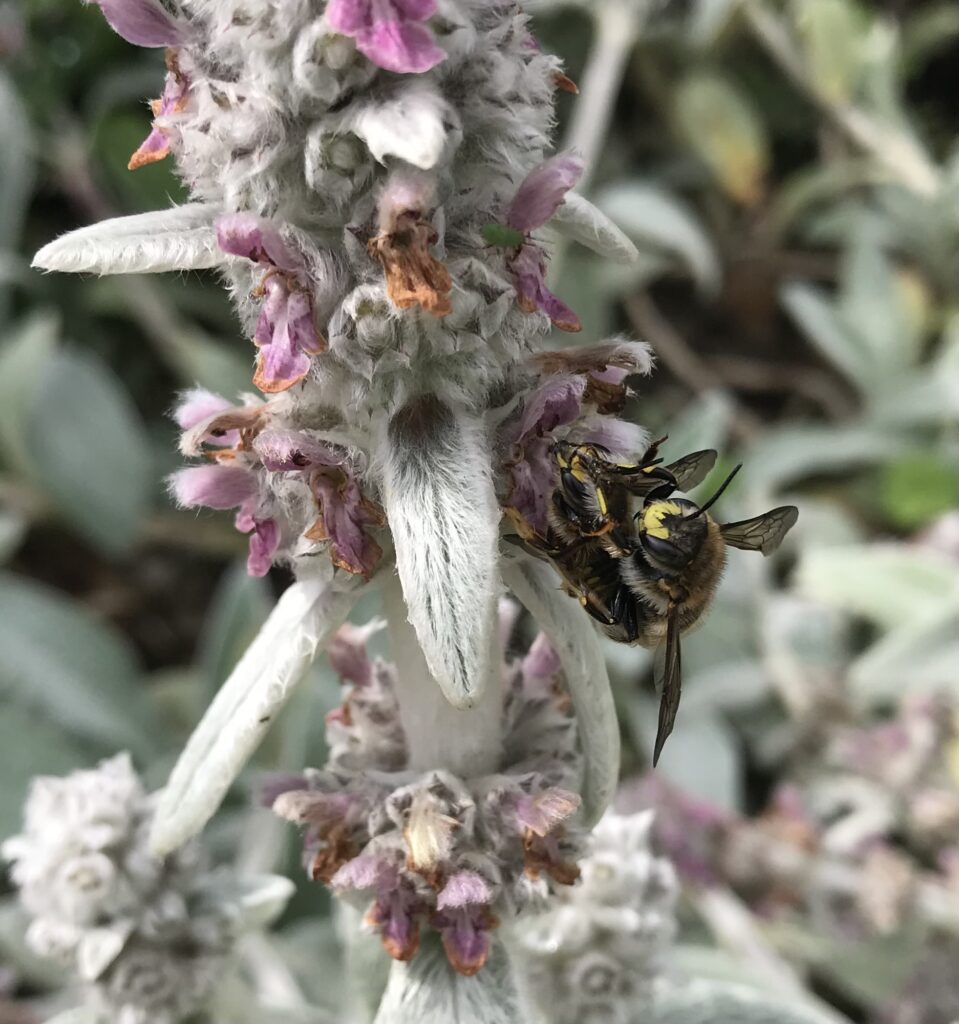Sometimes plants have evolved so closely with their pollinating partners that you can literally stake out the plant to find the pollinator.
Lamb’s ears (Stachys byzantina) was formerly known as Stachys lanata, but it’s fluffy, ear shaped leaves gives it its more common name of bunny’s ears or lambs ears for obvious reasons.
It’s a useful garden plant for so many reasons, it’s easy to grow, it’s semi evergreen and it has spikes of attractive fluffy grey flower spires adorned with soft pink, nectar rich flowers.

It’s a magnet for all sorts of pollinators, especially for bees, but there is one solitary bee in particular that is closely associated with this plant. The Wool Carder Bee (Anthidium manicatum) is often found around clumps of the summer flowering perennial. If you grow this plant stake it out in July and look for the territorial behaviour of what is quite an odd looking bee. The male Wool Carder Bee patrols a clump of lamb’s ears and chases off anything other insects that come near using his spiky bottom. He drinks nectar from the flowers to sustain his activity and patiently waits for a female wool carder bee to arrive. He knows she will come because she shaves the fluff off the leaves and stems and weaves the soft fibres into little sleeping bag pockets for her babies.
You can read more about Lamb’s ears and the woolcarder bee here. It is more common in the southern counties of the UK but I have seen it in Wales and in Lincolnshire.